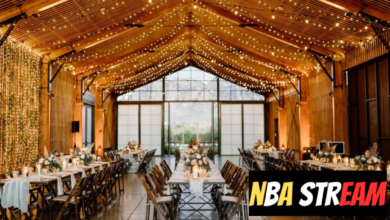Introduction
The kitchen is often referred to as the heart of the home, and at its center stands the modern kitchen island—a versatile and stylish addition that has transformed the way people interact with their cooking space. Once considered a mere utility, the kitchen island has evolved into a multifunctional design element that enhances both form and function.
Modern kitchen islands are no longer just additional counter space; they serve as prep areas, dining tables, storage hubs, and even entertainment centers. Whether you live in a compact apartment or a spacious home, a well-designed kitchen island can optimize space, improve workflow, and elevate the aesthetic appeal of your kitchen. This article delves deep into the features, benefits, design inspirations, and practical considerations of modern kitchen islands to help you make the best choice for your home.
Key Features of a Modern Kitchen Island
Design Aesthetics
One of the defining characteristics of a modern kitchen island is its sleek, minimalist design. Unlike traditional kitchen islands, which often feature bulky structures and ornate detailing, modern islands prioritize clean lines and simplicity. The use of neutral colors, open shelving, and handleless cabinets contributes to a streamlined, contemporary look.
The integration of mixed materials, such as wood with stainless steel or quartz with glass, further enhances the island’s visual appeal. Whether you prefer a monochrome scheme or a bold color contrast, modern kitchen islands can be customized to align with your personal style and complement your existing decor.
Materials and Finishes
The choice of materials plays a crucial role in the durability and aesthetic of a kitchen island. Some of the most popular materials include:
- Quartz: Durable, non-porous, and available in a variety of colors and patterns.
- Granite: A natural stone that provides a luxurious look and excellent resistance to heat and scratches.
- Wood: Adds warmth and a rustic charm to the space, though it requires regular maintenance.
- Stainless Steel: Perfect for industrial-style kitchens, offering a modern and hygienic surface.
The finish of the island, whether glossy, matte, or textured, can also influence the overall ambiance of the kitchen, making it either cozy and inviting or sleek and sophisticated.
Smart Storage Solutions
Storage is a key consideration when designing a kitchen island. Modern kitchen islands often incorporate deep drawers, pull-out shelves, and built-in organizers to maximize space utilization. Hidden compartments, spice racks, and vertical dividers ensure that utensils and pantry items are easily accessible yet neatly tucked away.
For those who prefer an open-concept look, floating shelves can be integrated into the island to display decorative pieces, cookbooks, or frequently used kitchen tools. The adaptability of storage solutions allows homeowners to keep their kitchen clutter-free while maintaining a stylish aesthetic.
Seating Arrangements and Integrated Appliances
A well-designed kitchen island can also serve as a casual dining area or breakfast bar. Incorporating bar stools, benches, or even built-in seating can make the island a social hub where family members and guests can gather. The seating arrangement should be proportional to the size of the island to ensure comfort and functionality.
Incorporating appliances such as sinks, cooktops, dishwashers, and wine coolers enhances the practicality of the island. Some modern islands even feature smart technology, such as built-in wireless chargers, touchless faucets, and voice-activated lighting, making them a futuristic addition to any home.
Functional Benefits of a Modern Kitchen Island
Increased Counter Space and Improved Workflow
One of the biggest advantages of a modern kitchen island is the additional counter space it provides. Whether you need a surface for meal prep, baking, or serving, the island offers an extended workspace that makes cooking more efficient. The strategic placement of an island within the kitchen layout enhances workflow, ensuring that movement between the stove, sink, and refrigerator remains seamless.
Multipurpose Usage and Social Hub
Beyond cooking, a kitchen island can serve multiple purposes, from a home office station to a kids’ homework corner. It also becomes the focal point of social interactions, allowing the cook to engage with family and guests while preparing meals. The addition of pendant lighting or under-cabinet lights can further enhance the ambiance, making the island a welcoming space for gatherings.
Design Inspirations and Trends
Waterfall Countertops and Mixed Materials
Waterfall countertops, where the material cascades down the sides of the island, create a sleek, contemporary look. Pairing different materials, such as wood and marble or steel and concrete, adds depth and texture to the design.
Bold Colors and Sustainable Designs
Dark hues, vibrant pops of color, and two-tone islands are trending in modern kitchens. Sustainable materials, such as reclaimed wood and energy-efficient LED lighting, cater to environmentally conscious homeowners looking to reduce their carbon footprint.
Choosing the Right Kitchen Island for Your Space
Selecting the right kitchen island depends on factors such as size, budget, and kitchen layout. It’s essential to balance functionality with aesthetics to ensure that the island complements the overall design. Professional installation is recommended for complex designs, whereas DIY solutions can be explored for simpler setups.
Conclusion
Modern kitchen islands are more than just a stylish addition; they enhance functionality, improve storage, and create a welcoming space for social interactions. Whether you prefer a minimalist design or a bold statement piece, a well-thought-out kitchen island can significantly elevate the overall aesthetic and efficiency of your kitchen. By considering materials, layout, and features, you can design an island that perfectly fits your lifestyle and needs.
Also Read: home depot careers




